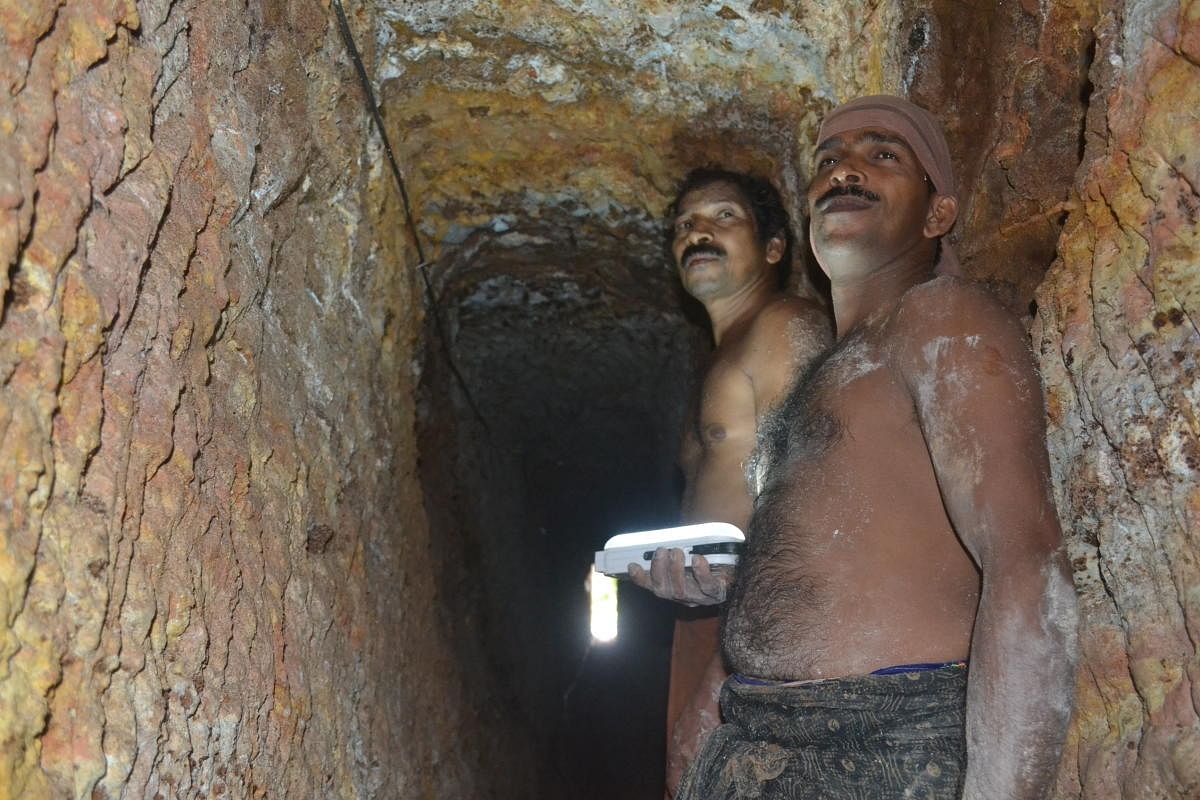
For four decades, Mahalinga Naik has used a traditional water management system to sustain his coconut and areca nut orchard in Dakshina Kannada. Naik was awarded the Padma Shri earlier this month for his “innovative, zero-energy micro-irrigation system”.
At his farm, water oozes out of a small pipe attached to a narrow tunnel, filling up a storage tank. Called the ‘Suranga’ or tunnel system, this water management system has adopted by several farmers in the hilly areas of Kasargod and parts of interior Dakshina Kannada.
“The suraganga has survived the test of time and is a lifeline for people,” says Shree Padre, an exponent of rainwater harvesting.
Surangas are excavated horizontally, either across a hillock or below the depth of an existing open well. During the monsoon, there is an increased flow of water in the Suranga when compared to the summer, but it rarely runs dry.
“After the suranga was dug more than 40 years ago, I haven’t faced water shortage, even when there was scanty rainfall in the region,” Naik says.
For farmers like Naik, the suranga was a sustainable option as he did not have the means to dig an open well nor sink a borewell.
The suranga is measured in units of kolu (2.5 feet) and is normally two feet wide and six feet high. However, its length varies anywhere between 10 metres to 300 metres.
Shree Padre says there could be around 10,000 surangas in Kasargod alone. There are some villages like Padre where 100 houses depend on the suranga to meet all their water requirements.
A 300-metre-long suranga next to the Shri Sharadamba High School at Sheni, Kasargod is a delight to watch. It has seven air vents, a few of which have served as open wells as well. These vents provided crucial ventilation to the people who worked on the suranga, according to Shree Padre. The entire structure lies in a dilapidated condition.
The Bayar village in Kasargod has over 2,000 surangas. “Our family has been using the water from the suranga for generations. At present, we have eight surangas in our land. Many families use only suranga water in Bayar,” says Giri Govind Bhat, a resident of the village.
“I have been using water from suranga to cultivate arecanut, coconut, cocoa, cinnamon, nutmeg and other crops in my farm land. The availability of water in these surangas has not declined in the last 60 years,” he says with pride.
“Construction of suranga is a one-time investment,” says Govinda Bhat from Manila village in Bantwal taluk “But now there are hardly any suranga diggers available. And unlike borewells, it cannot be done using machines,” says Bhat, who has 22 water-yielding surangas in his 17-acre land.
Water from the surangas is channelled to five earthen tanks, and then for farming. Bhat says he has to go into the suranga to clear any roots that might disrupt the flow of water in the pipe laid there.
“My father, the late Manimoole Achyutha Bhat brought this traditional water harvesting system to the Manila village after having noticed it in Padre,” Bhat says.
“In fact, he guided the labourers in and around Manila in the skill of digging suranga.”
Now, 300 households depend on the structures for their daily water requirements.
Bhat says the government should support drilling surangas through Mahatma Gandhi National Rural Employment Guarantee Scheme (MGNREGS) and other schemes as they are sustainable, do not affect groundwater table and require no electricity.